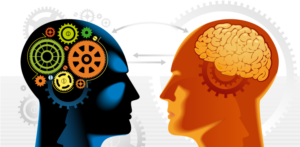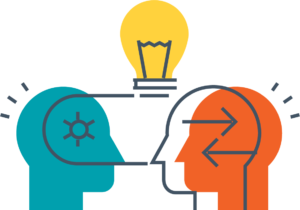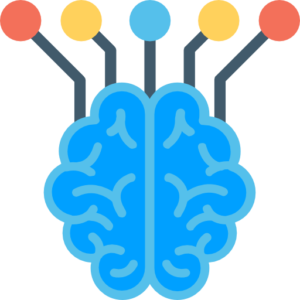Overview: Have you ever questioned how robots manage to sound so human? How do they interpret your words? It’s all possible with the pure magic of Natural Language Processing (NLP). It has become more prevalent and is gaining more attention globally. NLP is crucial for apps and developments in artificial intelligence and machine learning because of its interactive capabilities. Are you excited about exploring more about NLP? – Keep reading!
In the digital age, innovation and its advancements have become integral to our way of life. The accepted belief up until recently was that while artificial intelligence (AI) was superior to humans at data-driven decision-making activities, it still outperformed them in cognitive and creative professions. Thoughts on what language-based AI can do have changed over the past few years due to the technology’s rapid advancement.
The branch of AI devoted to how computers may interpret language similarly to humans, known as “Natural Language Processing” (NLP), has made the most notable gains. NLP opens up many possibilities for technologists, from smart speakers to chatbots for customer support. According to a study, by 2027, the NLP market is expected to have grown from $15.7 billion in 2022 to $49.4 billion, at a CAGR of 25.7%.
What is Natural Language Processing (NLP)?

NLP stands for “Natural Language Processing,” a field that combines computer science, linguistics, and artificial intelligence. The advent of technology has made it possible for machines to understand, analyze, manipulate, and interpret human languages. NLP is the driving force behind computer programs that translate text between languages, respond to spoken commands, and summarize enormous quantities of text quickly and in real-time.
How does Natural Language Processing work?

NLP enables computers to comprehend natural language in the same way that people do. Natural language processing employs artificial intelligence to translate real-world information into a form that a computer can recognize, whether the language is either spoken or written. Computers have programs for reading and microphones for audio collection, much as humans have various sensors like ears for hearing and eyes for seeing.
Computers use software to process their inputs just as humans use a brain to do the same. The input is eventually translated into computer-readable code during processing. Creating algorithms and data preprocessing by custom enterprise software development services are the two fundamental stages of NLP. Data preprocessing entails getting text data ready and “cleaned” up so that computers may use it for analysis.
Preprocessing transforms data into usable forms and draws attention to text elements that an algorithm can use. There are numerous methods for doing this, including:
Lemmatization and Stemming: Words are reduced down to their basic components at this point for processing.
Part-of-speech tagging: At this point, words are classified according to the part of speech they belong to, such as adjectives, nouns, and verbs.
Stop word removal: Common terms are eliminated from the text, in this case, leaving just the special words that provide the greatest context.
Tokenization: Text is divided into manageable chunks at this point.
A processing algorithm is created to handle the preprocessed data. NLP algorithms come in a wide variety, but two basic categories are most frequently used:
Rules-based system:
Specifically crafted linguistic rules are used in this system. This methodology was applied early in the evolution of NLP and is still applied today.
Machine learning-based system:
Algorithms for machine learning utilize statistical techniques. As leading data analytics companies handle more data, they refine their techniques as they learn new tasks based on training data. NLP algorithms refine their own rules by processing and learning new information repeatedly. This is done by combining machine learning, deep learning, and neural networks.
What are the various applications of NLP?

-
Chatbot:
One of the important purposes of NLP is the implementation of chatbots. Many businesses use it to offer chat services to their customers.
-
Creating Subtitles:
It enables the textual representation of a digital image or video. It is useful for everyone, not only those who are blind or visually challenged, and it also produces search results for photos and videos based on the text you provide.
-
Data Extraction:
One of the most crucial applications of NLP is data extraction. It extracts structured data from unstructured or partially structured machine-readable texts.
-
Linguistic Simulation:
Based on the underlying source of the data, the computers use NLP to forecast a relevant characteristic or expression. It commonly appears when creating new headlines, sentences, sections, or papers and when predicting the suggested continuation of a text.
-
Machine Translation:
The input information is translated from one language to another depending on the user’s desires. These involve converting an audio file or a document from any foreign language to English or vice versa.
-
Natural Language Understanding (NLU):
It converts a big collection of text into more formal representations, including first-order logic structures, that are easier for computer programs to understand and use in notations for NLP.
-
Speech Recognition:
NLP is used to produce the right text depending on the audio data that has been collected. This capacity is used by virtual personal assistants, subtitle insertion, and speech interpretation.
-
Text Classification:
Text inputs can be categorized by topic, accent, and other factors. Spam email filtering, language recognition, sentiment analysis, and type classification are all allegedly made easier by this application.
Why Natural Language Processing for enterprise?

In enterprise, there are many different uses for natural language processing. For example, brand sentiment research is only one of the many enterprise applications for NLP. Many enterprises conduct social media sentiment research and monitor online sentiment. With social media sentiment analysis, businesses may learn more about what their customers are saying and how they behave by monitoring online conversations.
NLP can be used for good in various contexts besides social media. Customer service applications and user experience enhancements are only a few additional business use cases for NLP. Monitoring for malicious cyberattacks, like phishing, or identifying deception are examples of practical applications of NLP. It is also beneficial for enterprises to hire dedicated mobile app developers to assist in all fields because it gives them the ready-to-use resources needed to build complex apps.
You can also view more of our works and case studies here!
Wrapping Up:
Natural language processing is highly used in both technology and human interaction. Chatbots, cybersecurity, search engines, and big data analytics are just a few real-world uses for it in the corporate and consumer worlds. NLP is anticipated to continue playing a significant role in business and daily life, despite some challenges. Enterprises willing to stay advanced in the tech-driven world can get in touch with the top digital transformation consulting firms to avail the best NLP and AI solutions to stay ahead in the competitive market.



